This article needs additional citations for verification. (October 2007) (Learn how and when to remove this template message) |

In typography, emphasis is the strengthening of words in a text with a font in a different style from the rest of the text, to highlight them. It is the equivalent of prosodic stress in speech.
Contents
Methods and use
The most common methods in Western typography fall under the general technique of emphasis through a change or modification of font: italics, boldface and small caps. Other methods include the alteration of LETTER CASE and?spacing?as well as color and *additional graphic marks*.
Font styles and variants
The human eye is very receptive to differences in "brightness within a text body". Therefore, one can differentiate between types of emphasis according to whether the emphasis changes the "blackness" of text, sometimes referred to as typographic color. A means of emphasis that does not have much effect on blackness is the use of italics, where text is written in a script style, or oblique, where the vertical orientation of each letter of the text is slanted to the left or right. With one or the other of these techniques (usually only one is available for any typeface), words can be highlighted without making them stand out much from the rest of the text (inconspicuous stressing). This is used for marking passages that have a different context, such as book titles, words from foreign languages, and the like.
By contrast, a bold font weight makes letters of a text thicker than the surrounding text. Bold strongly stands out from regular text, and is often used to highlight keywords important to the text's content and allowing such words to be visually scanned with ease. For example, printed dictionaries often use boldface for their keywords, and the names of entries can conventionally be marked in bold. If a publisher prefers not to use bold, or has already used it for another purpose, a second form of emphasis can be introduced by using an abc or def version of the main text font, although this is not very common.
Small capitals are also used for emphasis, especially for the first line of a section, sometimes accompanied by or instead of a drop cap, or for personal names as in bibliographies.
If the text body is typeset in a serif typeface, it is also possible to highlight words by setting them in a sans serif face. This practice is often considered archaic in Latin script, and on computers is complicated since fonts are no longer issued by foundries with a standard baseline, so switching font may distort linespacing. It is still possible using some font superfamilies, which come with matching serif and sans-serif variants, though these are not generally supplied with modern computers as system fonts. In Japanese typography, due to the reduced legibility of heavier Minch? type, the practice remains common.
Of these methods, italics, small capitals and capitalisation are oldest, with bold type and sans-serif typefaces not arriving until the nineteenth century.
Capitalization
The house styles of many publishers in the United States use all caps text for:
- chapter and section headings;
- newspaper headlines;
- publication titles;
- warning messages; and
- words of important meaning.
Capitalization is used much less frequently by British publishers, and usually only for book titles.
All-uppercase letters are a common substitute form of emphasis where the medium lacks support for boldface, such as old typewriters, plain-text email, SMS and other text-messaging systems.
Socially, the use of all-caps text in Roman languages has become an indicator of shouting when quoting speech. It was also often used in the past by American lawyers to flag important points in a legal text. Coinciding with the era of typewriter use, the practice became unnecessary with the advent of computerised text formatting, although it is still found on occasion in documents created by older lawyers.
Letter spacing
This section's factual accuracy is disputed. (April 2011) (Learn how and when to remove this template message) |
Another means of emphasis is to increase the spacing between the letters, rather than making them darker, but still achieving a distinction in blackness. This results in an effect reverse to boldface: the emphasized text becomes lighter than its environment. This is often used in blackletter typesetting and typewriter manuscripts, but by no means restricted to those situations.
This letter-spacing is referred to as sperren in German which could be translated as "spacing out": in typesetting with letters of lead, the spacing would be achieved by inserting additional non-printing slices of metal between the types, usually about an eighth of an em wide. On typewriters a full space was used between the letters of an emphasised word and also one before and one after the word.
For black letter type boldface was not feasible, since the letters were very dark in their standard format, and on (most) typewriters only a single type was available. Although letterspacing was common, sometimes different typefaces (e.g. Schwabacher inside Fraktur), underlining or colored, usually red ink were used instead.
Since blackletter type remained in use in German speaking parts of Europe much longer than anywhere else, the custom of letterspacing is sometimes seen as specific to German, although it has been used with other languages, including English. Especially in German, however, this kind of emphasis may also be used within modern type, e.g. where italics already serve another semantic purpose (as in linguistics) and where no further means of emphasis (e.g. small caps) are easily available or feasible. Its professional use today is very limited in German. This use of spacing is also traditionally found in Polish.
German orthographic (or rather typographic) rules require that the mandatory blackletter ligatures are retained. That means, ?t, ch, ck, and tz are still stuck together just as the letter ß, whereas optional, additional ligatures like ff and ?i are broken up with a (small) space in between. Other writing systems did not develop such sophisticated rules since spacing was so uncommon therein.
In Cyrillic typography, it also used to be common to emphasize words using letterspaced type. This practice for Cyrillic has become obsolete with the availability of Cyrillic italic and small capital fonts.
Underlining
Professional Western typesetting usually does not employ lines under letters for emphasis within running text, because it is considered too distracting. Underlining is, however, often used with typewriters, in handwriting and with some non-alphabetic scripts. It is also used for secondary emphasis, i.e. marks added by the reader and not the author.
Overlining
In Arabic, it is traditional to emphasize text by drawing a line over the letters.
Punctuation marks
Sometimes quotation marks are used for emphasis.[12]
In Chinese, emphasis in body text is supposed to be indicated by using an "emphasis mark" (???????), which is a dot placed under each character to be emphasized. This is still taught in schools but in practice it is not usually done, probably due to the difficulty of doing this using most computer software. Consequently, methods used for emphasis in Western text are often used instead, even though they are considered inappropriate for Chinese (for example, the use of underlining or setting text in oblique type).
In Japanese texts, when katakana would be inappropriate, emphasis is indicated by "emphasis dots" (?? or ??) placed above the kanji and any accompanying furigana in horizontal writing and to the right in vertical writing. Japanese also has an "emphasis line" (??) used in a similar manner, but less frequently.
In Korean texts, a dot is placed above each hangul syllable block or hanja to be emphasized.[citation needed][clarification needed]
In Armenian the ???? (šešt) sign ( ? ) is used.
In Internet usage, asterisks are sometimes used for emphasis (as in "That was *really* bad"). Less commonly, underscores may be used, resembling underlining ("That was _really_ bad"). These are seen on sites where input is restricted to plain text with no method to apply markup tags (e.g. <i> for italics, or <b> for boldface). In some cases, the engine behind the text area being parsed will render the text and the asterisks in bold automatically after the text is submitted.
Color
Colors are important for emphasizing. Important words in a text may be colored differently from others. For example, many dictionaries use a different color for headwords, and some religious texts color the words of deities red, commonly referred to as rubric. In Ethiopic script, red is used analogously to italics in Latin text.[13]
Post-print emphasis added by a reader is often done with highlighters which add a bright background color to usual black text.
Design
There are many designs. With both italics and boldface, the emphasis is correctly achieved by swapping into a different font of the same family; for example by replacing body text in Arial with its bold or italic style. Professional typographic systems, including most modern computers, would therefore not simply tilt letters to the right to achieve italics (that is instead referred to as slanting or oblique), print them twice or darker for boldface, or scale majuscules to the height of middle-chamber minuscules (like x and o) for small-caps, but instead use entirely different typefaces that achieve the effect. The letter 'w', for example, looks quite different in italic compared to upright.
As a result, typefaces therefore have to be supplied at least fourfold (with computer systems, usually as four font files): as regular, bold, italic, and bold italic to provide for all combinations. Professional typefaces sometimes offer even more variations for popular fonts, with varying degrees of blackness. Only if such fonts are not available should[citation needed] the effect of italic or boldface be imitated by algorithmically altering the original font.
The modern Latin-alphabet system of fonts appearing in four standard weights, regular (or "Roman"), italic, bold and bold italic is a relatively recent development, dating to the early twentieth century. Modern "Roman" type was developed around the 1470s, while italic type was developed around 1500 and was commonly used for emphasis by the early 17th century. Bold type did not arrive until the nineteenth century, and at first fonts did not have matching bold weights; instead a generic bold, sometimes a Clarendon or other kind of slab-serif, would be swapped in.[14] In some books printed before bold type existed, emphasis could be shown by switching to blackletter.[15] Some font families intended for professional use in documents such as business reports may also make the bold-style numbers take up the same width as the regular (non-bold)
Watch movie Bold online on Amazon
Watch movie Bold online
Watch The Movie On PrimeDance Dance Full HD Movie Download

Chaalbaaz Full HD Movie Download

Abdullah Full HD Movie Download
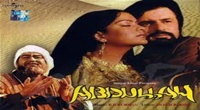
Durga Pooja Full HD Movie Download

Narad Muni Full HD Movie Download
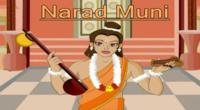
Lal Patthar Full HD Movie Download
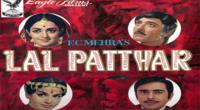
Aakhri Adalat Full HD Movie Download
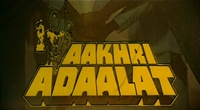
Inquilab (1984) Full HD Movie Download
.jpg)
Body Parts Full HD Movie Download
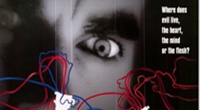
Mate Anidela Lakhe Phaguna Full HD Movie Download

Subhash Full HD Movie Download

Appula Apparao Full HD Movie Download

Adbhutam Full HD Movie Download

Still Green Full HD Movie Download

Bat Hunter Full HD Movie Download

Ayiram Poi Full HD Movie Download

Manchal Nila Full HD Movie Download

Anandha Ragam Full HD Movie Download

Anjaneyulu Full HD Movie Download

Rajakumari Full HD Movie Download
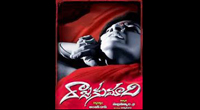
The Mountain Of The Cannibal God (Telugu) Full HD Movie Download
.jpg)
Download latest Movie from bollywood
- 1> baaghi 3
- 2> THE SKY IS PINK MOVIE FULL STORY AND REVIEW
- 3> Luka Chuppi
- 4> TO ALL THE BOYS I’VE LOVED BEFORE
- 5> Kabir Singh
- 6> Street Dancer 3D
- 7> Simmba
- 8> Gone Girl
- 9> The Girl Who Lived
- 10> Ludo
- 11> DILWALE DULHANIA LE JAYENGE
- 12> GUILTY
- 13> The Godfather
- 14> Adventures of Rusty
- 15> Sooryavanshi
- 16> Satyameva Jayate 2
- 17> Thappad
- 18> Bhool Bhulaiyaa 2
- 19> KGFChapter 2
- 20> Mardaani 2
- 21> Pinjar
- 22> Shivaji maharaj
- 23> Ek Villian 2
- 24> Hungama 2
- 25> Divergent
- 26> Mumbai Saga
- 27> The Internship
- 28> HIT (telugu)
- 29> Panga
- 30> The perfect date
- 31> 16 December
- 32> Gopala Gopala (Telugu)
- 33> Brahmastra
- 34> Gangubai Kathiawadi
- 35> Manmadhudu
- 36> Nenu local
- 37> Mahanati
- 38> Shatamanam bavathi
- 39> Lagaan
- 40> After
- 41> MOM
- 42> Shamshera
- 43> Raguvaran BTech
- 44> Khakee
- 45> The villain
- 46> OM
- 47> Mr. perfect
- 48> Bueatifull mind
- 49> Hichki
- 50> Gabbar Singh
- 51> Jogi
- 52> Before Sunrise
- 53> Before Sunset
- 54> Before Midnight
- 55> The Big Bull
- 56> Top Gun: Maverick
- 57> The Purge
- 58> The Sky is Pink
- 59> Laxmmi Bomb
- 60> Sadak 2
- 61> Sufna
- 62> Prithviraj
- 63> PK
- 64> Coolie No 1(2020)
- 65> Black Widow
- 66> Dear Zindagi
- 67> Dil Bechara
- 68> PHIR HERA PHERI
- 69> WAR
- 70> Dostana
- 71> RRR: Roudram Ranam Rudhiram
- 72> Maidan
- 73> Dabbang 3
- 74> Chhalaang
- 75> life as we know it
- 76> SherShaah
- 77> Sandeep Aur Pinky Faraar
- 78> Event Horizon
- 79> 83
- 80> Radhe: Your Most Wanted Bhai
- 81> Gunjan Saxena: The Kargil Girl
- 82> Mr India
- 83> Vivah
- 84> Anokha Bandhan
- 85> Ghost
- 86> Bhoot: Part One - The Haunted Ship
- 87> Haseen Dilruba
- 88> Laal Singh Chaddha
- 89> Qismat
- 90> Rajput
- 91> Drive
- 92> Dil Chahta Hai
- 93> Dil Ki Baazi
- 94> Dil Ka Rishta
- 95> Teesri Manzil
- 96> Dil
- 97> Love Aaj Kal
- 98> Khaali Peeli
- 99> Bunty Aur Babli 2
- 100> Atrangi Re
- 101> Gulabo Sitabo
- 102> Jodi
- 103> Suraj Pe Mangal Bhari
- 104> Deewana
- 105> Attack
- 106> Sardar Udham Singh
- 107> Toofan
- 108> THE LOVEBIRDS
- 109> Jersey
- 110> Ginny Weds Sunny
- 111> Thalaivi
- 112> Shiddat
- 113> Angels vs Zombies
- 114> Koi Mil Gya
- 115> Thank God
- 116> Bhuj: The Pride of India
- 117> Hum Aapke Hain Kaun
- 118> The Platform
- 119> Bird Box
- 120> Roohi Afzana
- 121> Torbaaz
- 122> Nikamma
- 123> World War Z
- 124> Extraction
- 125> Train to Busan
- 126> Life of Pi
- 127> SHAADI MEIN JROOR AANA
- 128> Himmat Aur Mehnat
- 129> To All The Boys: P.S. I Still Love You
- 130> Mimi
- 131> Good Newwz
- 132> Shubh Mangal Zyada Saavdhan
- 133> Raabta
- 134> Harry Potter and the Philosopher's Stone
- 135> Harry Potter and the Chamber of Secrets
- 136> Chhapaak
- 137> War of the Worlds
- 138> Harry Potter and the Prisoner of Azkaban
- 139> Harry Potter and the Goblet of Fire
- 140> MURDER MYSTERY
- 141> Shakuntala Devi
- 142> Bachchan Pandey
- 143> Jayeshbhai Jordar
- 144> Sheer Qorma
- 145> Saina
- 146> 'O' Pushpa I hate tears
- 147> Kedarnath
- 148> MS Dhoni The Untold Story
- 149> Chhichhore
- 150> Badhaai Ho
- 151> Unstoppable
- 152> Oz the Great And Powerful
- 153> The Girl on the Train
- 154> Haathi Mere Saathi 2020
- 155> The Conjuring: The Devil Made Me Do It
- 156> Gandhi Se Pehle Gandhi
- 157> The Song of Scorpions
- 158> Srimanthudu
- 159> Hello Guru Prema Kosame
- 160> Beauty and The Beast
- 161> Black Panther
- 162> Charlie and the Chocolate Factory
- 163> Bole Chudiyan
- 164> Fidaa
- 165> Duvvada Jagannadham
- 166> Bruce Lee: The Fighter
- 167> Hyper
- 168> Yaara
- 169> Red (2020)
- 170> Shivam
- 171> That Is Mahalakshmi
- 172> Nishabdham
- 173> Aashram 2020 web series
- 174> Laxmii
- 175> Mismatched
- 176> STUDENT OF THE YEAR 2
- 177> NAIL POLISH
- 178> Ramprasad Ki Tehrvi
- 179> KAAGAZ
- 180> 12 o Clock
- 181> The Power
- 182> bolo hau
- 183> Tribhanga
- 184> JAMUN
- 185> Madam Chief Minister
- 186> Maasaab
- 187> Aadhaar
- 188> Tanhaji
- 189> Bhaagi 3
- 190> Bhootnath
- 191> MALANG
- 192> Jai Mummy Di
- 193> Haathi Mere Saathi 2021
- 194> Shakeela
- 195> Unpaused
- 196> Annayya
- 197> Vamsoddharakudu
- 198> Mrugaraju
- 199> Narasimha Naidu
- 200> Sankranti
- 201> Manasu Maata Vinadhu
- 202> Anjaane
- 203> Apaharan
- 204> Bachke Rehna Re Baba
- 205> Bewafaa
- 206> Roohi
- 207> Radhe
- 208> Zindagi Khoobsoorat Hai
- 209> Yeh Mohabbat Hai
- 210> Yeh Kya Ho Raha Hai?
- 211> The Tomorrow War
- 212> DehradunDiary
- 213> Meri Shaadi Karaoo
- 214> Matruu Ki Bijlee Ka Mandola
- 215> No One Killed Jesica
- 216> Aag Ka Goola
- 217> Eight Million Dollars
- 218> Three Hundred
- 219> Cats and Dog
- 220> Decoy
- 221> Gold Rush
- 222> You Have Got Mail
- 223> Final Destination three
- 224> Tofan
- 225> Jungle
